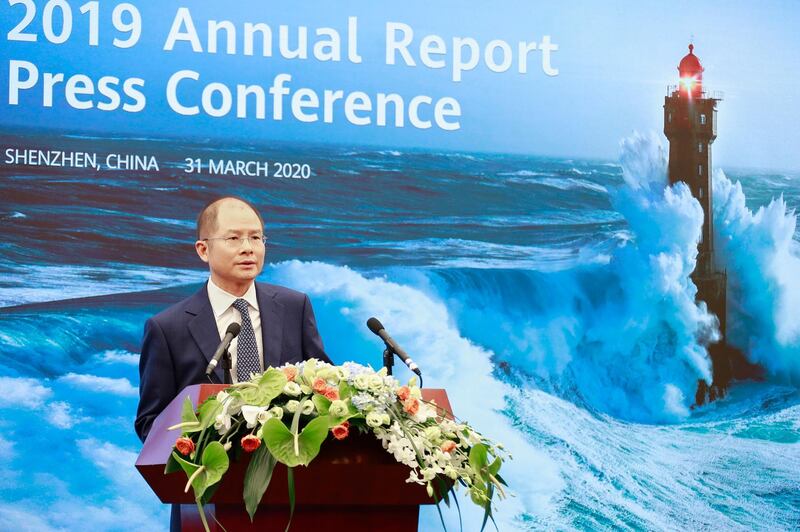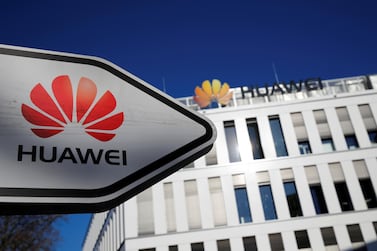Huawei’s full-year profit and revenue rose in 2019 despite restrictions from the US but the company is bracing for a tough 2020.
The Shenzhen-headquartered firm is anticipating 2020 to be challenging because of the disruptions caused by the coronavirus outbreak and the continuing restrictions preventing US companies from trading with it.
“We hope that the coronavirus outbreak will pass quickly and things will fall back to normal,” Eric Xu, Huawei's current chairman, told reporters on a video call while releasing the company’s earnings on Tuesday.
“As of today, our production in China has generally been restored and there will be no problem in the short-term supply. But it (coronavirus) is still spreading, especially outside China … if that cannot be controlled, it will cause long-term challenges and uncertainty,” he added.
The telecoms manufacturer posted a 19.1 per cent rise in revenue to $123 billion (Dh451.41bn) while its net profit rose 5.6 per cent to $9bn, the company said.
This was the second consecutive year that Huawei’s revenue crossed the $100bn mark.
Huawei, over the last few years, has been engaged in a dispute with the White House, which accuses the telecoms firm of using its high-tech equipment to spy for the Chinese government.
The US has also pushed its allies such as the UK, Australia, Canada and Norway to exclude Huawei from 5G network deals, citing security risks. However, Huawei has repeatedly refuted claims that its products could be used for spying.
“The US pressure has caused substantial impact on Huawei’s 5G business. It created extra workloads, we had to spend time in explaining our customers, partners and government regulators,” said Mr Xu, adding that Chinese government will do its best to safeguard the company’s interests.
“We are sure that Chinese government will not just stand and watch Huawei slaughtered on a chopping board. It may take counter measures as well.”
Mr Xu said that Huawei can choose to buy chipsets that are used in smartphones and 5G equipment from companies in Japan, South Korea, Taiwan and Europe if it is unable to source them from the US.
“We can buy from Samsung from Korea and MTK from Taiwan … in the long-term, there will be many Chinese companies manufacturing chipsets.”
Huawei, which sold 240 million smartphones last year, earned almost 55 per cent of its revenue – $66.9bn – from its consumer business. Meanwhile, enterprise and carrier businesses contributed $12.8bn and $42.5bn respectively.
The company is one of the world’s largest investors in research and development. It invested 15.3 per cent of its revenues on R&D in 2019 and employs 96,000 people – 49 per cent of the total workforce – in the division.
"We started focusing more on R&D from May 16, last year (Huawei was placed on an entity list by the US) … the external environment will only get more complicated going forward," Mr Xu said.
"We need to keep enhancing the competitiveness of our products and services, promoting open innovation, and creating greater value for our customers and society at large.”
According to the company's 2019 annual report, Huawei derived 59 per cent of its revenue from China, followed by Europe, the Middle East and Africa as one unit (24 per cent), Asia Pacific (8.2 per cent) and the Americas (6.1 per cent). Other markets accounted for 2.7 per cent of total sales.
Despite external pressures, Huawei is still a key player in 5G services.
By the end of last year, Huawei said it had managed to secure 77 5G contracts globally, of which 12 are in the Middle East. Nearly half of its contracts are in Europe, where it faces tough competition from local companies such as Nokia (63 contracts) and Ericsson (81 contracts).
“Our revenue from 5G (in 2019) was more than $3bn … percentage-wise it is very small but global deployment of the network has started recently and still we haven’t seen a large scale roll-out,” said Mr Xu.








